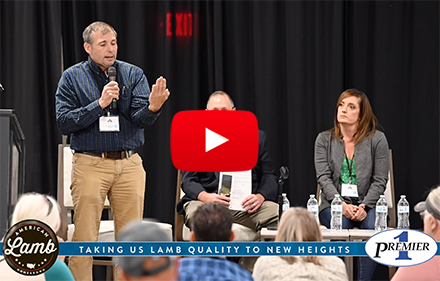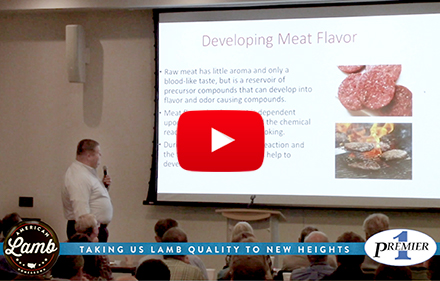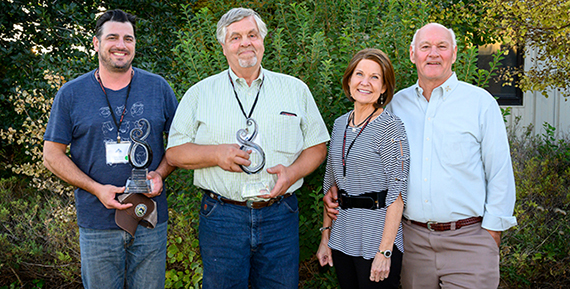| |
|
Initial Reactions…
|
| |
|
A note from Stan Potratz, Premier’s founder.
|
| |
|
It far exceeded my expectations. So much so that you can be assured that it will be repeated in 2021 in a different location with a larger audience and even better presentations. (It’s core belief at Premier that there is almost no product, service or organization so good that it cannot be improved.)
|
| |
|
My personal goal for Lamb Summit ’19 was to focus attention onto our industry’s core problems, needs, and opportunities. They are, as identified by the Lamb Board’s Road Map effort:
|
| |
- To better compete with imported lamb, domestic beef, and pork by improving the quality of our lamb as it leaves the farm, ranch or feedlot.
- To improve the production efficiencies of our farms and ranches to enable them to produce high quality lamb for less cost/lb.
|
| |
|
We achieved that, but much more work is required.
|
| |
|
We all have our own takeaways from the event. The two that remain uppermost in my mind are:
|
| |
- Dr. Zerby’s explanation about the process of deposition of fat within lamb muscle. (Unfortunately some portions of his talk are not part of the video below as it was in a USDA meat lab and photos were not allowed.)
- The taste comparison of lamb from 4 sources (US grain fed, US grass fed, Australia, and New Zealand). All attendees took part. Led by Dr. Woerner. Be sure to look at his video. Educational and fun!
|
| |

|
Henry Zerby, PhD
Wendy’s Quality Supply Chain Co-op, Inc.
|
|
| |

|
Dale Woerner, PhD
Texas Tech University
|
|
| |
|
|
While lamb is a superior meat to beef and pork it is at the same time more “fragile” (more easily turned into a negative eating experience by an inexperienced cook).
|
| |
|
Why is that? Because it is less likely than beef to contain intramuscular fat (IMF)—a long word for “marbling”. Marbling in a muscle enables it to remain moist after cooking is complete. And IMF/marbling is a primary source of flavor. Less marbling/IMF increases the probability of dry, flavorless meat.
|
| |
|
Dr. Zerby explained that the very desirable IMF fat is developed gradually inside muscle throughout the life of the lamb vs. the much less desirable external fat that primarily occurs when the lamb is approaching maturity.
|
| |
|
If the lamb is stressed and ceases to eat regularly (due to sickness, injury, extreme weather, difficult weaning, or sudden changes in diet) the lamb draws on the IMF/marbling as a source of energy. Once IMF is gone it is not replaced, though more may be gradually added over time.
|
| |
|
Conclusion: If we want lamb to have the maximum flavor, tenderness, and resistance to drying out during cooking we should do what we can to reduce its stress.
|
| |
|
Lamb Industry Innovator Award
|
| |
|
The goal of the award is to stimulate an interest in lamb industry innovation, raise the image of the U.S. lamb industry, and to recognize those individuals that move the industry forward.
|
| |
|
This year, the $25,000 award went to two industry leaders instead of one:
|
| |
- Tom Boyer for his work on the Leading Edge Program which aims to provide a uniform and quality-consistent product to the consumer.
- Cody Heimke for spearheading value-based incentives for better lamb at Niman Ranch.
|
| |

|
| |
|
Due to the shortness of time they were selected rather than nominated. Another Lamb Industry Innovator Award will be given in 2021. We will be accepting nominations prior to the event (whose date and location will be announced later.)
|
| |

|
| |
Stan Potratz
Founder, Premier 1 Supplies
|
| |
|
P.S. — A new Lamb Summit website is coming soon! We’re building an online home for videos and resources from Lamb Summit ’19, as well as details about the next summit.
|
| |
|
Sponsored By
|
| |
|
|